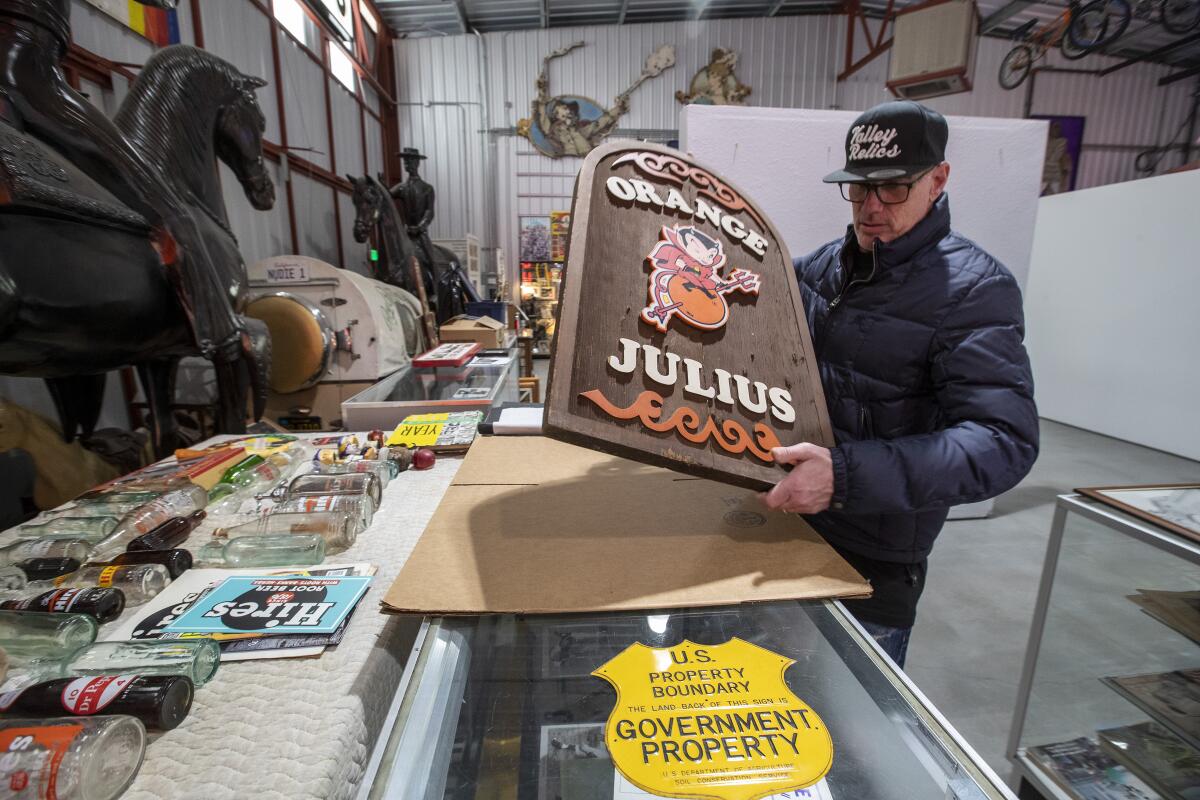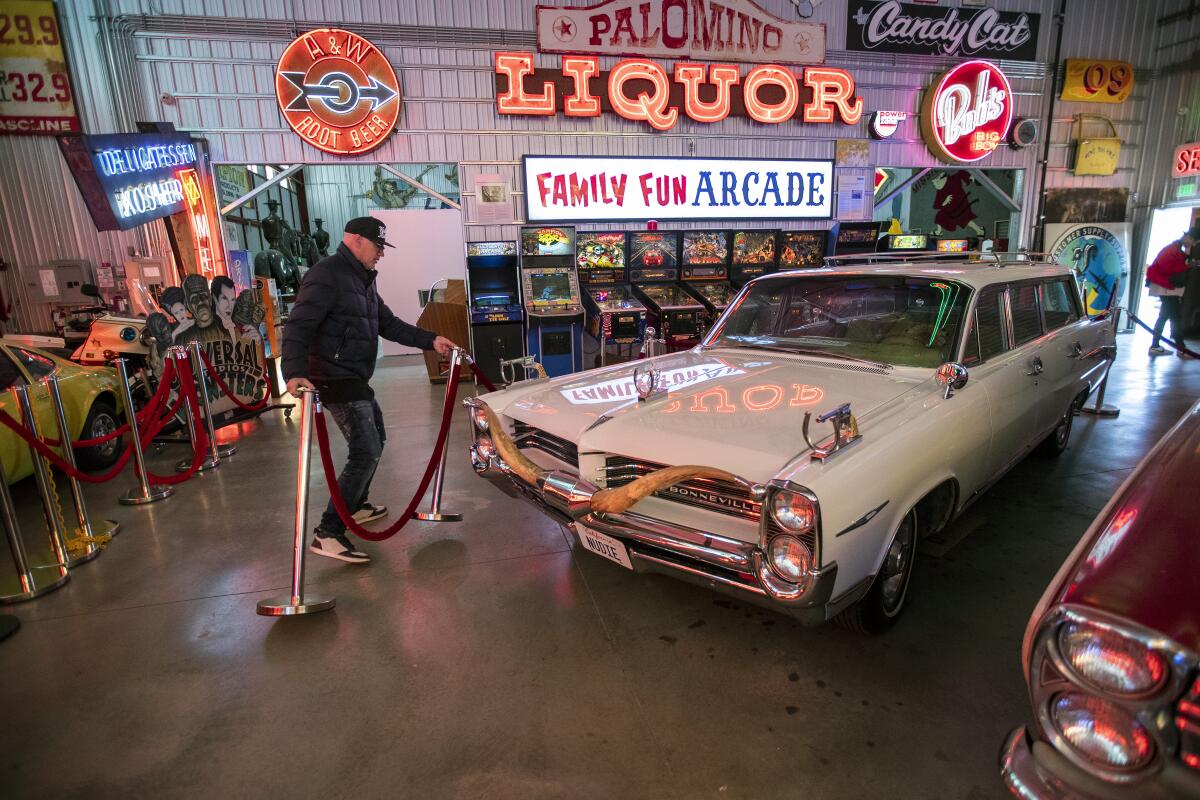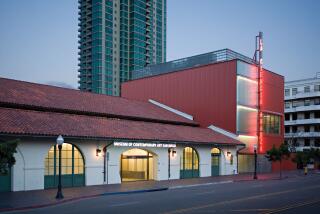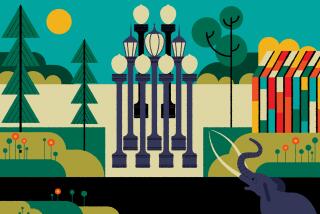Coronavirus could shut down some of L.A.’s most vulnerable hubs of culture and history

- Share via
It was never easy getting people to walk into the Altadena Bunny Museum.
With a dearth of paying customers to help keep it going, naturally occurring social distancing was already a thing at the small rabbit-inspired museum Candace Frazee co-founded in 1998.
Then the first coronavirus guidelines rolled through California, locking down many “nonessential” businesses in a dramatic effort to slow the spread of the deadly COVID-19 disease. Soon, the provisions morphed into a stay-at-home order from California Gov. Gavin Newsom that closed down all museums, including Frazee’s.
“Now we have guidelines to follow, people are staying home for their safety and that’s going to make our survival difficult,” Frazee said.
The beginning of the lockdown process also kick-started a debate as to what was an essential business.
Pool halls and flower shop owners in San Jose considered their businesses essential, while Los Angeles County officials wrestled with whether gun stores were. Other businesses, such as radio parts manufacturers and even Tesla Inc., stayed open.
Easy to overlook was L.A. County’s constellation of small- to medium-sized museums such as the Gilb Museum of Arcadia Heritage, the Underground Museum in Arlington Heights, the African American Firefighter museum in downtown L.A., Montebello’s Juan Matias Sanchez Adobe and the American Military Museum in South El Monte.
Lake Balboa Valley Relics Museum and Event Space curator Tommy Gelinas summed up his frustration while adding a new exhibit to his institution — which he hopes to reopen before too long.
“This museum is not a big money-maker for me or my partners,” he said. “We all have second jobs, so to close down is serious and difficult.”
For scores of curators, founders and directors of L.A. County’s small- to medium-sized museums, survival was a struggle before the coronavirus.
“This is really scary for us. We have no revenue coming in, no endowment to dip into.”
— Heritage Square Museum Executive Director Kori Capaldi
Now mandatory closures that may extend for weeks, if not months, might end up converting temporary shutdowns into the permanent closures of some of Southern California’s most overlooked fountains of culture and history.
Opened in 2013, Valley Relics, located adjacent to the Van Nuys Airport, is dedicated to preserving the history of the San Fernando Valley from the early 1900s to the 1980s and is home to original neon signs, from Pioneer Chicken to Dairy Queen, menus from defunct restaurants, pinball machines and arcade games and a slew of BMX racing bikes from local legends.
“We’re strictly funded by the community, from [annual] memberships to [single-day] entrance fees to programming, the hosting of historic events and our online store,” Gelinas said. “So the longer we’re closed, the more difficult it will be for us to stay alive.”
Gelinas believes he’ll be able to slide lease payments owed for the next two months to the back end of his contract. But a shutdown extended beyond May would complicate things, he said. In the meantime, the museum is relying on online sales of items such as retro T-shirts.
For 22 years, the Bunny Museum has broken Guinness World Record marks for its collection of rabbit knickknacks and memorabilia, which currently stands at 37,653 pieces, including two living 16-pond Flemish Giant rabbits. Frazee is not optimistic about the museum’s ability to survive if there is a prolonged lockdown.
“We need about $500 a day to keep the museum open and we’re very upfront with people,” Frazee said. “If people want me to show them my electric bill or photocopy another bill — my mortgage, insurance or internet — I’ll gladly do it.”
Before the closure, Frazee studied COVID-19 guidelines for reducing the spread of the disease, from propping open the front door so it didn’t have to be touched by guests to placing hand sanitizer throughout the premises. Before she ultimately shut down her the museum, Frazee held private tours limited to 10 or fewer people.
Frazee did not want to speculate on how long she could hold out. But she said she was hopeful people would consider making donations or buying gift certificates.
“We’re not a nonprofit that has thousands of members or an endowment,” Frazee said. “We’re very much at the service and mercy of the public for our survival and we’re in a tough place.”

The 51-year-old Heritage Square Museum in Montecito Heights had seemed to be turning a financial corner. Eight homes and businesses constructed during the late 19th century comprise the museum square and offer visitors a glimpse of life during the early statehood of California. Just last year, the museum had been profitable.
“Last year was the first year Heritage Square was in the black, and we were feeling very motivated to continue that trend,” said museum executive director Kori Capaldi.
Capaldi said it wasn’t uncommon a few years back to have five people attend on an “average Friday,” while about 20 to 30 patrons would visit on Saturdays. Those numbers had improved to about 50 people showing up on Fridays and 200 on a typical Saturday. Capaldi said the closure of the museum, which happened on March 15, could put the brakes on such gains.
Another valuable income stream that also dried up with the shutdown is rentals for weddings, corporate events and film shoots. Movies such as “Legally Blonde” and “Saving Mr. Banks” were shot at the square, along with various commercials.
“This is really scary for us,” Capaldi said. “We have no revenue coming in, no endowment to dip into. We’re a small nonprofit that depends on fundraising events, daily admission, rentals, the help of private donors and the generosity of the community.”
The museum has emailed its members, updating them on the current situation and soliciting one-time donations.
“Heritage Square has weathered some pretty tough storms,” Capaldi said. “We won’t let this get us down, but we’re going to need a lot of help to get through this.”
More to Read
Sign up for Essential California
The most important California stories and recommendations in your inbox every morning.
You may occasionally receive promotional content from the Los Angeles Times.











